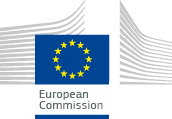PROJECT DESCRIPTION
BACKGROUND
Bonellis eagle (Aquila fasciata) is a priority species of the Birds Directive (Annex I) and is the subject of an International Species Action Plan. Its conservation within Natura 2000 network sites and in the wider countryside is also among the priorities of the EU Biodiversity Strategy, and National Biodiversity Strategies in Greece and Cyprus. In Greece, two LIFE projects have targeted the species. In Cyprus, though there have not been specific conservation efforts, the species has benefited from the control of persecution and the establishment of vulture feeding stations. Nevertheless, in both countries, many threats remain that need to be addressed, along with knowledge gaps that prevent the spatial assessment of mortality causes and regional population dynamics. Direct mortality is caused by collisions with electricity power lines and wind turbines, poisoning and hunting, and drowning in water tanks; habitat degradation (e.g. abandonment of farmland, afforestation) reduces prey availability; and human activities (e.g. rock climbing, military aircraft) disturb birds at nesting sites. Meanwhile, nature management authorities in the eastern Mediterranean have limited technical and operational capacity to manage the species.
OBJECTIVES
The LIFE Bonelli eastMed project will address the most critical threats to Bonellis eagle populations in Greece and Cyprus. The overall objective is to ensure the long-term favourable conservation status for the species interconnected local populations, through the establishment and operation of the East Mediterranean Bonellis Eagle Network (EMBoNet).
Specific project objectives include:
Filling current knowledge gaps, especially the lack of telemetry data that prevents a spatial assessment of mortality and population dynamics; Reducing direct mortality inside breeding areas in Natura 2000 sites (SPAs) in Greece and Cyprus; Improving the species reproduction success by foraging habitat management and reducing human disturbance; Improving the technical and operational capacity of nature authorities and other stakeholders, so that they can more effectively manage the species populations; Improving the awareness of stakeholders and specific target groups for the sustainable conservation of the species; and Planning and implementing an effective transferability and replicability strategy for EMBoNet. Besides the Birds Directive and the EU Biodiversity Strategy to 2020, the project is also addressing the EU Climate Change Mitigation policy [by tackling the risks to the targeted species from the expansion of wind farm networks].
Expected results:
Improved conservation status of over 40 % of the Greek and Cypriot Bonellis eagle populations, which constitute over 30 % of the eastern Mediterranean population and over 5 % of the European population; Indirect benefits to the entire eastern Mediterranean population through species surveys, conservation planning, networking and capacity building actions; Establishment of the East Mediterranean Bonellis Eagle Network (EMBoNet) to coordinate conservation efforts for the species; Information gathered from the tagging of 80-100 Bonellis eagle individuals to fill knowledge gaps, including data for assessing the risks from planned expansions of electricity grids and wind farms; Collection and update of baseline information on Bonellis eagle and associated threats, followed by a 25 % reduction in direct mortality in 50 breeding territories and dispersal areas through the insulation of 300 pylons, the marking of at least 16 km of power lines, construction of anti-drowning modifications in at least 62 open water tanks, and the creation of three anti-poison canine teams; Regulation of human disturbance in 30 nesting sites through nest surveillance, road closure, regulation of climbing activities, and designation or expansion of boundaries of at least six wildlife reserves; Increased prey availability in breeding territories through cultivations of around 600 ha, construction/repair of at least 173 watering structures, creation of at least 20 ha of forest and 5 ha of shrub openings, and regulation of hunting in at least three sites; Ensured continuity of project conservation actions by engagement with at least 30 stakeholders, with five replications or transfer of methods during the projects duration; Involvement and training of employees of nature authorities, other stakeholders and volunteers in conservation actions and Natura 2000 site management; and Changed behaviour of climbers, hikers, hunters, and other site users by at least 20 %.>:li>

